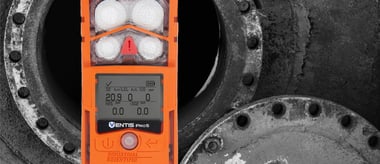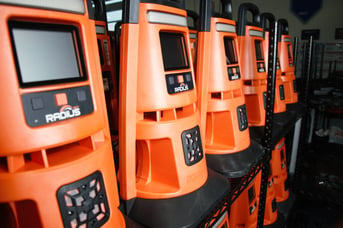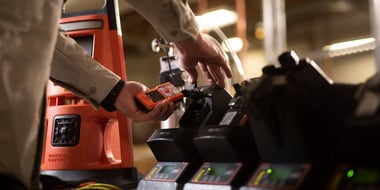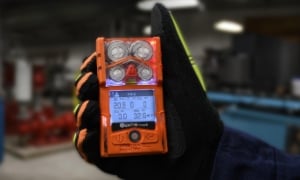 No matter how you spin it, industrial environments continually feature environments with hazardous gases – meaning having the right equipment for the job isn’t just a precaution; it’s a necessity. Whether you’re working in oil and gas and chemical manufacturing or utilities, construction, and beyond – the air you breathe could secretly be a silent assassin.
No matter how you spin it, industrial environments continually feature environments with hazardous gases – meaning having the right equipment for the job isn’t just a precaution; it’s a necessity. Whether you’re working in oil and gas and chemical manufacturing or utilities, construction, and beyond – the air you breathe could secretly be a silent assassin.
Picking the best personal gas monitor, however, is a task that requires understanding, careful consideration, and a balance of features that are tailored to your specific needs. Check out our top 10 tips to ensure you have the right protection against any would-be assassins:
1. Identify Your Hazards
The first step in choosing a personal gas monitor is to identify the specific gases you might encounter in your work environment. Common hazards can include gases like CO, HCN, HCL, H2, CO2, NH3, ClO2, and HCL, among others, as well as other volatile organic compounds (VOCs).
Each gas features its own detection requirements and some monitors, such as the Ventis Pro5 or MX6 iBrid, can detect multiple gases at once. Monitors like this can be customized to fit a users’ specific needs and feature multiple sensor optics, runtime options, alarm thresholds, and more. This ensures that you can always detect the hazards impacting your environment and that your monitor will alert you to the right dangers.
2. Consider the Type of Detector
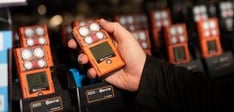 After identifying what type of hazards your site faces, you need to consider the type of monitor – single-gas or multi-gas. Single-gas monitors are smaller and can be less expensive, but they only monitor one type of gas. Multi-gas monitors, on the other hand, can be outfitted with multiple different sensors so they can accurately multiple gases. Plus, many of these sensors can be swapped based on your application, eliminating the need to carry multiple monitors.
After identifying what type of hazards your site faces, you need to consider the type of monitor – single-gas or multi-gas. Single-gas monitors are smaller and can be less expensive, but they only monitor one type of gas. Multi-gas monitors, on the other hand, can be outfitted with multiple different sensors so they can accurately multiple gases. Plus, many of these sensors can be swapped based on your application, eliminating the need to carry multiple monitors.
3. Look for Reliability and Accuracy
The best personal gas monitors are ones you can rely on without question. For example, monitors that feature DualSense Technology, for example, can use two sensors to detect the same gas type and eliminate the risk of sensor failure. By using redundant sensors to monitor the same gas, you can eliminate the pain of balancing cost, safety, and bump test frequency while maintaining confidence in each monitor’s gas detection accuracy.
4. Ease of Use and Maintenance
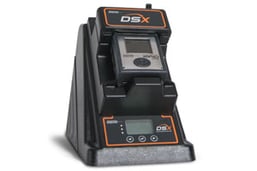 For every gas monitor you use: maintenance should be minimal. When deciding on your next personal monitoring setup, look for devices that self-check their operation and alert you to any malfunctions. For example, every personal monitor from Industrial Scientific is compatible with the DSX Docking Station. This automates charging, bump tests, calibrations, firmware updates, bulk setting updates, and more. These combined features make every personal monitor “plug-and-play friendly,” and even feature lighting indicators so you know when a monitor is ready to use.
For every gas monitor you use: maintenance should be minimal. When deciding on your next personal monitoring setup, look for devices that self-check their operation and alert you to any malfunctions. For example, every personal monitor from Industrial Scientific is compatible with the DSX Docking Station. This automates charging, bump tests, calibrations, firmware updates, bulk setting updates, and more. These combined features make every personal monitor “plug-and-play friendly,” and even feature lighting indicators so you know when a monitor is ready to use.
5. Consider the Alarming System
In an emergency, complexity is the enemy. Your gas monitor should be straightforward to use, with a clear display and intuitive controls. Effective gas monitors don’t only go into a high-decibel alarm or feature bold LED lights, they’ll also feature clear, programmable alarm action messages like “ventilate” or “evacuate.” These messages help reduce the risk of human error and simplify the decision-making process for users in the field.
6. Think About the Battery Life
A monitor is only good if it's powered. While thinking about your next personal monitor, you want to ensure that the device has a long-lasting battery that suits your work shifts. Think about how often the battery is charged and what the process looks like. In some instances, using a monitor with a compatible docking station is key because it won’t only charge the device, but it will calibrate the device simultaneously, alert you when the device is ready, and if the device is experiencing any malfunctions.
7. Real-Time Monitoring and Data Logging
For some users, it’s not enough to track what happened at the end of the workday. But opting for a gas monitor that automatically shares real-time gas readings, man-down, and panic alarms between peers, the entire team will always know if someone is in danger – and why.
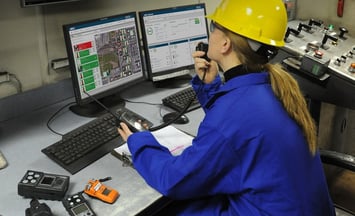 Additionally, for site managers that want to track exposure over time or communicate with a central safety system, you can find monitors that also store this real-time information in robust comprehensive safety management programs. This can help improve operational readiness, as it allows safety personnel to see patterns across a site and make proactive improvements to prevent incidents. When an emergency does happen, response teams can spend less time investigating where alarms and exposures occur and more time jumping into action.
Additionally, for site managers that want to track exposure over time or communicate with a central safety system, you can find monitors that also store this real-time information in robust comprehensive safety management programs. This can help improve operational readiness, as it allows safety personnel to see patterns across a site and make proactive improvements to prevent incidents. When an emergency does happen, response teams can spend less time investigating where alarms and exposures occur and more time jumping into action.
8. Durability and Environmental Resistance
A gas monitor is just as much a tool as any other in your kit, so it must be able to withstand harsh industrial work environments. When identifying your next gas detector, you’ll want to check for resistance to water, dust, and impact. Personal monitors from Industrial Scientific, for example, feature a minimum of IP64+ protection from water and dust and are intrinsically safe.
After all, a rugged design can mean the difference between a reliable device and a broken one.
9. Certifications and Compliance
Depending on your region, you may need to ensure that your gas monitor complies with relevant industry standards and certifications. Even if these standards and certifications aren’t necessary where you’re located, they can still be a good indicator to the quality and durability of a product.
For example, an ATEX certification in Europe that ensures safety in the workplace by determining whether equipment is suitable for operation in potentially explosive environments. While this certification isn’t required in the U.S., it is a good indicator if you work in a similar environment and want to ensure the reliability of your equipment.
10. After-Sales Support and Warranty
Finally, with any item you purchase, you’ll want to consider the manufacturer’s reputation for customer service as well as any warranties offered with the device. A good gas detector manufacturer won’t view themselves as just your partner in gas detection, but as an extension of your team. After all, it’s not only about gas detection, it’s about saving lives.By carefully considering these factors, you can select a personal gas monitor that offers the best protection for your specific application. Remember that the right device isn’t just protecting you from silent assassins, they’re an investment in your health and safety. By choosing the best one, you’re taking a step toward ensuring that every day is as safe as it can possibly be.
Talk to an expert to learn which personal monitor is best for your safety.
